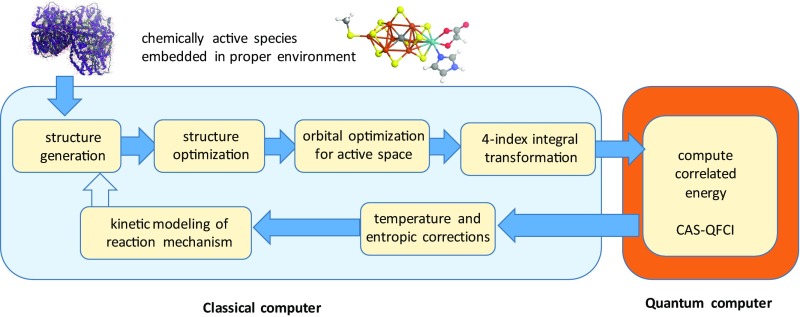Fig. 2.
Generic flowchart of a computational reaction mechanism elucidation with a quantum computer part that delivers a quantum full configuration interaction (QFCI) energy in a (restricted) complete active orbital space (CAS). Once a structural model of the active chemical species (here FeMoco, top right) embedded in a suitable environment (the metalloprotein, top left) is chosen, structures of potential intermediates can be set up and optimized. Molecular orbitals are then optimized for a suitably chosen Fock operator. A four-index transformation from the atomic orbital to the molecular basis produces all integrals required for the second-quantized Hamiltonian. Once the quantum computer produces the (ground state) energy of this Hamiltonian, this energy can be supplemented by corrections that consider nuclear motion effects to yield enthalpic and entropic quantities at a given temperature according to standard protocols (e.g., from DFT calculations). The temperature-corrected energy differences between stable intermediates and transition structures then enter rate expressions for kinetic modeling. For complex chemical mechanisms, this modeling might point to the exploration of additional structures.

